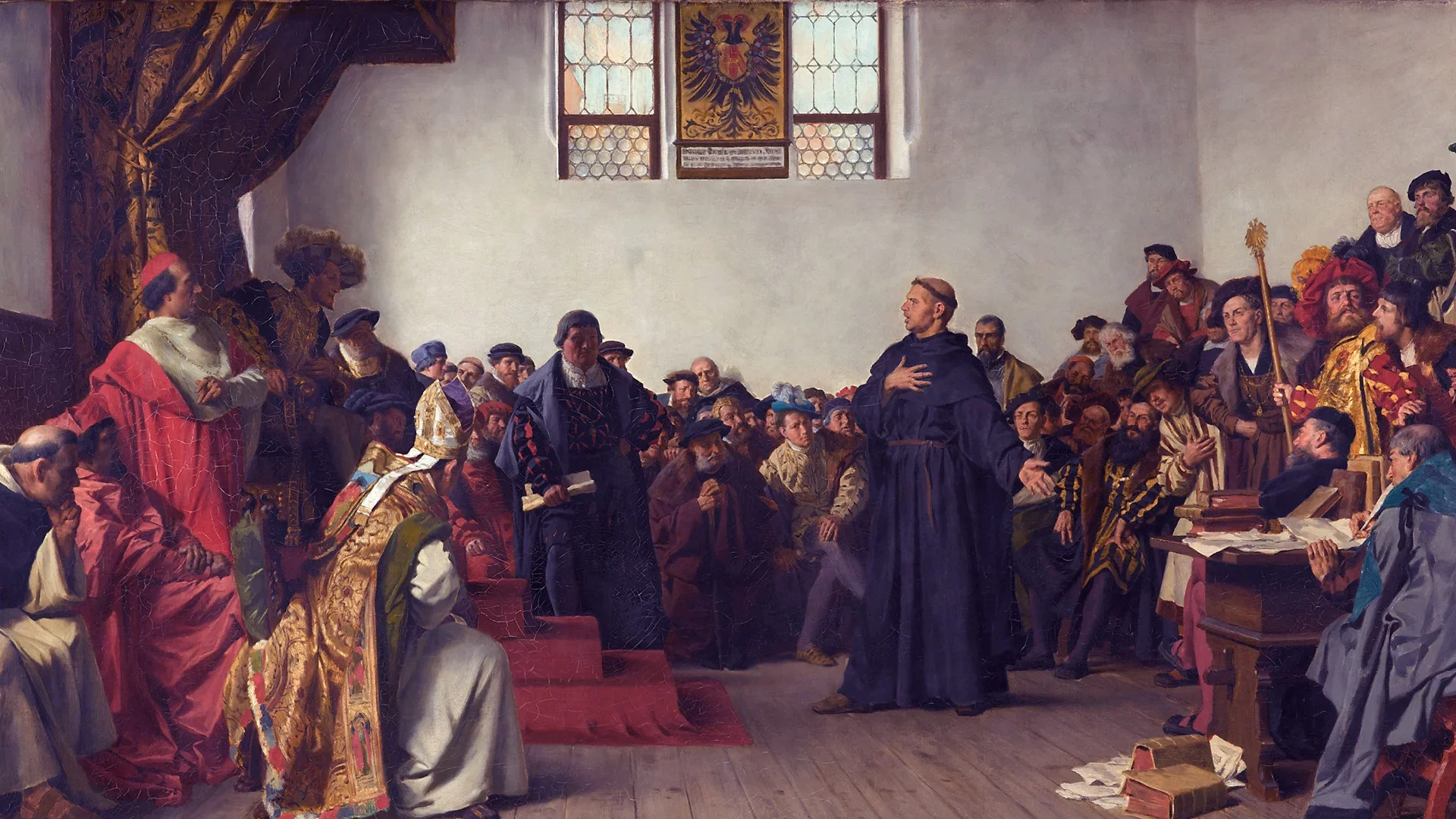On our trip to Germany, we visited the famous Wartburg Castle, which stands on top of a hill above the town of Eisenach. Eisenach lies on the very western edge of the German province of Thuringia. The Wartburg is famous today as the place where Prince Frederick the Wise secreted away his favorite monk, Martin Luther, in order to save his life. But the Wartburg castle has a legendary history as well.
Ludwig der Springer (“the Jumper”) was a Thuringian Count around 1100 AD. Ludwig belonged to the Ludowingian dynasty, which became prominent in Thuringia. He wished to build a castle on the hill above the town of Eisenach in order to expand his sphere of influence to the east. However, the land was not in his jurisdiction, and he had no authority to build.
To overcome this slight difficulty, legend has it that Ludwig ordered his men to bring soil from his own lands and spread it on top of the hill. Then, he proceeded with his plan and built a watchtower and other defenses on the site. His right to build was challenged by the Archbishop of Mainz who governed the region. Right or wrong, Ludwig stood his ground and claimed he had built on his own land.
There are times when one must give ground, and times when one must stand on it. Four hundred years later came just such a time.
In 1521, Emperor Charles V called an imperial diet (assembly) to deal with an upstart monk named Martin Luther. Luther was summoned to the town of Worms to renounce his writings. For the past four years, this monk had been stirring things up in the Church. It had begun in 1517 when Martin Luther had posted ninety-five theses on the Castle Church door in Wittenburg. Luther was inviting discussion around what he saw as theological abuses in the Roman Catholic Church.
In the four years between 1517 and 1521, Luther had written prolifically. The booklets and pamphlets Luther was being asked to recant spoke against the abuses in the Church, but also taught Christian doctrine accepted by the Church. He wrote that many of the Church’s teachings were unhelpful or wrong. These were not based on Scripture, Luther said, but on the decrees of Popes and Councils and on past tradition. Luther’s writings, for example, condemned the sale of forgiveness through indulgences. They spoke out against the misuse of the authority of the Popes, past and present. His writings decried a false assurance of salvation, and corruption within the higher authorities in the Church.
At Worms, it was demanded that Luther recant and disavow what he had written. But Martin stood his ground. He responded that, unless he was persuaded by Scripture and clear reason, and not by Popes or Councils that have so often erred and contradicted each other, his conscience was captive to the Word of God. To go against conscience, he said, is neither right nor safe. He refused to recant. And then he said the words that have come down to us through the centuries: “Here I stand. I can do no other. God help me. Amen.”
Martin Luther knew when to stand his ground. And, he knew he was not standing on false ground, on a lie, on ground fashioned by himself or others. He was not opposing the Church to gain political power or increase his sphere of influence. Indeed, he knew that his life was forfeit for taking this stand against the authority of the Church. Others had been killed for doing the same:
1384 - John Wycliffe in England (Criticized papal power and abuses, indulgences; translated the Bible into English). NOTE: Wycliffe died of natural causes in 1384, but his bones were posthumously dug up and burned by the Church in 1428!)
1415 – Jan Hus in Bohemia (Followed Wycliffe’s teachings and was burned despite a safe-conduct guarantee)
1416 – Jerome of Prague (Follower and friend of Jan Hus)
1498 - Girolamo Savonarola of Florence (Denounced papal corruption)
Luther was condemned as a heretic and labeled an outlaw. He could now be captured or killed on sight. But God had more work for Martin Luther to do and his supporters staged a “kidnapping” on his way home from Worms. Safely tucked away in the Wartburg Castle, Luther continued to stand his ground on holy Scripture, even translating the New Testament, and ultimately the entire Bible, into the German language.
Martin Luther had not intended to create a new Church but, rather, to reform the Catholic (universal) Church, pruning and cutting away practices and teachings that were unhelpful or that openly contradicted the Word of God. The Reformation had begun. The Gospel of salvation by GRACE ALONE, through FAITH ALONE, as found in SCRIPTURE ALONE, was free from the practices and teachings that had obscured or downright buried it.
As we move toward a celebration of the Reformation, we thank God for the work he accomplished for the Church through Martin Luther and the other reformers. We thank God for His undeserved love (grace) for sinners in sending His Son, Jesus, to suffer and die to set us free from sin, death and the power of the devil. We thank God that we have His holy Word in our own language, and that He prospers the work of those who are translating the Scriptures into languages around the world. And we thank Him for giving us the opportunity to share His love with others, praying that God would use us as His instruments in the world today.
God be with you as we stand together on His Word, rejoicing in our salvation by grace alone, through faith alone, as found in Scripture alone.
- Pastor
